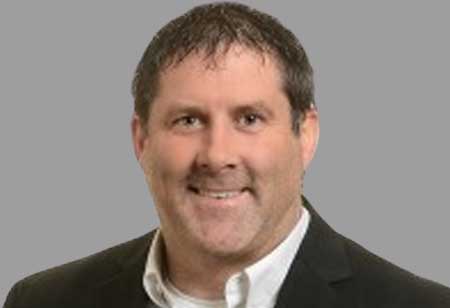THANK YOU FOR SUBSCRIBING

Pioneering Smart Solutions for Accurate Climate Observation
Andrew Siffert, Senior Vice President, BMS Group

 Andrew Siffert, Senior Vice President, BMS Group
Andrew Siffert, Senior Vice President, BMS GroupIn an interview with Applied Technology Review, Andrew Siffert, senior vice president at BMS Group, sheds light on temperature monitoring technology that can provide invaluable predictive data analytics to mitigate risk associated with extreme weather events.
Please brief us on your current roles and responsibilities at BMS Group.
Serving my tenure at BMS Group for more than 10 years, I have had the privilege to work for a globally recognized specialty insurance broker that specializes in offering wholesale insurance and reinsurance products. As a senior vice president, my primary focus is to facilitate the brokering and placement of insurance for businesses.
Meteorologists play a crucial role in insurance companies when they are susceptible to large-scale catastrophes, including tornadoes, hailstorms, hurricanes, wildfires, windstorms, and freezing temperatures. Our expertise goes into understanding and analyzing trends in various aspects of extreme weather events. We monitor their changing patterns and assess how the changes can impact the return period of these events. Since extreme events have infrequent occurrences, we need to gain a comprehensive understanding of their likelihood and severity. Consequently, we delve into the details of these events and assess the potential damage they can cause by evaluating the vulnerability of different assets, like residential and commercial buildings, apartments, and infrastructure.
What are some of the major challenges in the temperature monitoring industry?
One of the primary challenges in comprehending extreme events lies in the dynamic nature of their measurement. The continuous advancements in technology, along with the growth of population and infrastructure, have resulted in improved measurements of extreme events. This progress encompasses the utilization of satellite technology, surface observational data, and the widespread dissemination of information through digital media platforms, enabling a more comprehensive understanding of the occurrence of extreme weather phenomena. However, accurately assessing trends and comprehending the occurrence of these events becomes complex due to the evolving nature of observational techniques. Additionally, there is a tendency to place excessive significance on particular return periods of an event without understanding the uncertainties associated with the observations due to limited data points.
What are the prominent technological trends that you have observed in the weather monitoring landscape?
The ever-evolving nature of technological advancements has significantly enhanced our ability to observe and monitor the Earth's phenomena, leading to increased resolution in both time and space. Satellite imagery provides us with higher frequency and resolution observations, while surface monitoring has been improved through the deployment of Mesonet technology. The strategic placement of multiple weather stations within a specific area allows us to detect the occurrence of extreme wind events more accurately. As we continue to expand the coverage of Mesonet, we enhance our ability to identify and analyze more frequent events.
"Our expertise goes into understanding and analyzing trends in various aspects of extreme weather events."
Please share a project or initiative undertaken in the temperature monitoring space
A significant portion of my work revolves around educating insurance companies and industry professionals on the occurrence and frequency of extreme events, pertaining to climate change. It involves highlighting the impact of evolving technologies that may influence the observed trends in data. Ensuring a comprehensive understanding of these events and their changing nature is a key aspect of my role. Additionally, I devote substantial time to working with capacity risk models, which are essential in assessing the probability of occurrence and estimating potential damages caused by various risks. Exploring these models help us determine appropriate pricing for risk within the insurance industry.
How do you envision the future of temperature monitoring solutions?
The insurance industry and the cash risk market are traditionally characterized by a slow pace of change. However, advancements in our understanding of extreme weather trends have the potential to drive transformative shifts in these sectors. By improving our ability to comprehend the patterns and drivers behind extreme weather events, including fluctuations in sea surface temperatures or changes in arctic sea ice, we can predict the future occurrence of these events more effectively. Gaining access to more extensive and refined datasets, coupled with enhanced observational capabilities, we can progressively refine our understanding of the changing landscape and reduce the uncertainties associated with our current knowledge.
What is your advice for peers in the industry?
Embracing an open mind and a proactive mindset is important to understand the nature and intensity of weather phenomena. A comprehensive examination of the data is necessary to identify the influencing factors behind the observed trends. One has to consider keeping up with the pace of ongoing technological developments, particularly, when analyzing the data. Going forward, we can anticipate the deployment of more weather sensors and the potential use of drones to gather data from within hurricanes. This will provide us with higher-resolution observational data, potentially revealing previously unseen or underestimated aspects of hurricanes.
Read Also

















ON THE DECK